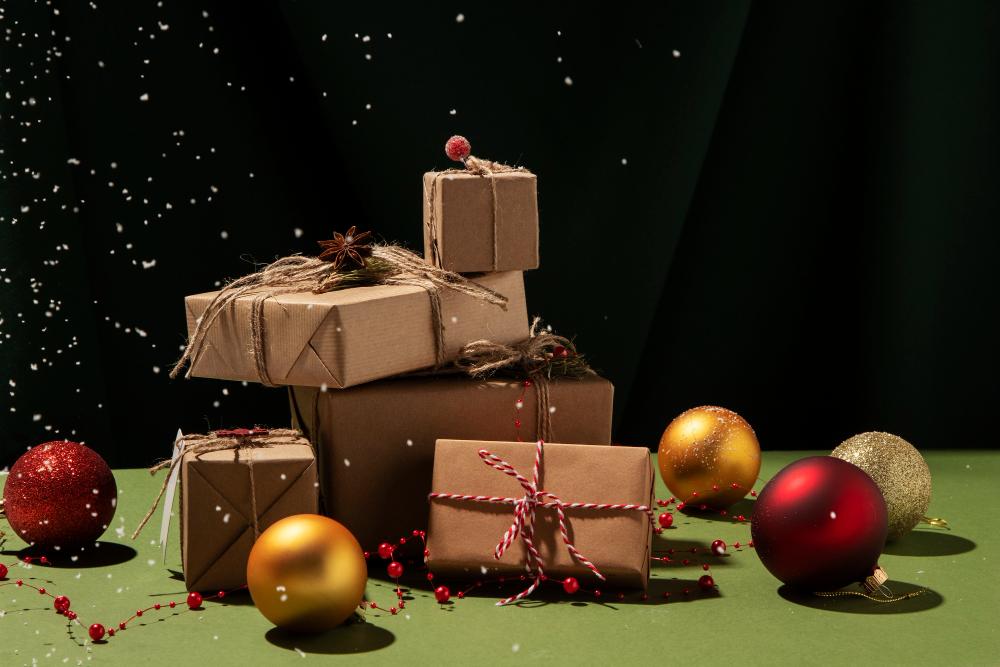Introduction
The popularity of vintage Christmas selection boxes shows how the common stocking filler changed from a luxurious present that families would save all year to a regular and affordable Christmas gift. This post will sail you through the years together, and see if you recognize any from your own past.
The 1920s
By 1920, sweets and chocolates were no longer limited to the wealthy and nobility; chocolate companies like Rowntree’s and Cadbury’s entered the market, offering special Christmas Club cards to local newsagents and grocery stores. Customers would take their Christmas Club card to their local shop each week, pay an installment, and have it signed. This helped shoppers afford a luxurious chocolate gift box but also helped the factory to work out how much demand there would be for their product. This allowed families to choose what chocolates and sweets they wanted in each box, which would often cost more than a week’s wages at that time.
The 1930s
In the 1930s, Rowntree’s began adding novelty items to the packs, such as vases, carriage clocks, and cutlery sets, which acted as keepsakes once the chocolate had been eaten. They ranged in price from 2 shillings and 6 pence up to 10 shillings, depending on the size of the gift inside each box. It was at this time that selection boxes also began to include toys and other children’s presents.
World War II and Rationing
War rationing began in 1939, and the making of chocolate and cocoa came under government control. Children were given a specific weekly sugar allowance, and the buying of sweets became restricted. Rationing affected supply in Britain until 1954, but when it ended, sweets and chocolate treats became everyday items. Then, came a rich choice of chocolate bars packaged in boxes that featured board games, often with hexagonal spinners.
The 1960s
The selection box became increasingly popularized in the 1960s when games like Snakes and Ladders were put on the back of the boxes. It was then that some of the iconic treats we know today began to appear in the packs, including Smarties, Aero, Kit Kat, fruit gums, and fruit pastels. From 1965, Jelly Tots were introduced to selection packs by Rowntree’s, with Freddo chocolate frogs brought in by Cadbury’s in 1967. By this time, children expectantly received a selection box each year and regarded them as a main Christmas gift.
The 1970s
The seventies saw the creation and debut of a number of additional chocolate bars that were included in a range of selection boxes, including the Curly Wurly in 1970, the Texan bar in 1975, and the Yorkie and Lion bars in 1976. The Wispa bar was introduced in 1978. By the late 1970s, some of the selection boxes became plastic-wrapped selection packs, and there was no more room for cut-out games. Companies also began to play with the idea of the selection box and released smaller selection crackers.
The 1980s
More changes were made in 1984 when Texan bars and Spangles were no longer made. However, in this same year, the new Cadbury Twirl bar was added. As chocolate became more affordable, selection boxes came down in price, with an eight-bar pack costing just £2.15 in 1987—a far cry from the days of Christmas Club saving schemes.
The 1990s
By the 1990s, selection boxes were more often packed by robot rather than by hand to bring down costs. Another change included a general trend in the size of many of the chocolate bars becoming smaller. A Mars bar from today would weigh 28% less than one from a selection box from the beginning of the 1990s, for instance. By the end of the current Christmas shopping season, selection boxes are expected to be purchased by UK customers for more than £30 million. This suggests that they will continue to be a popular choice for stocking stuffers for many years to come, for both adults and children.
The 2020s and onward years to come
The Christmas selection boxes of 2024 are not like those of the past; producers are using less plastic and eco-friendly packaging; consumers are demanding healthier options, so producers are providing dark chocolate, organic ingredients, and even vegan treats; technological advancements have allowed producers to include interactive elements into these boxes, like QR codes that link to festive games and augmented reality experiences; and consumers are increasingly choosing chocolates and candies based on their preferences.
Conclusion
In a nutshell, the journey of Christmas selection boxes showcases their transformation from luxury gifts to cherished holiday traditions. Evolving with societal changes and consumer preferences, they continue to delight both children and adults. As they adapt to modern trends, selection boxes remain a beloved symbol of festive joy and nostalgia.




